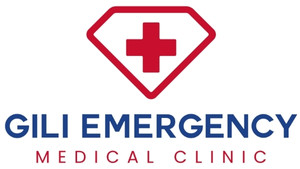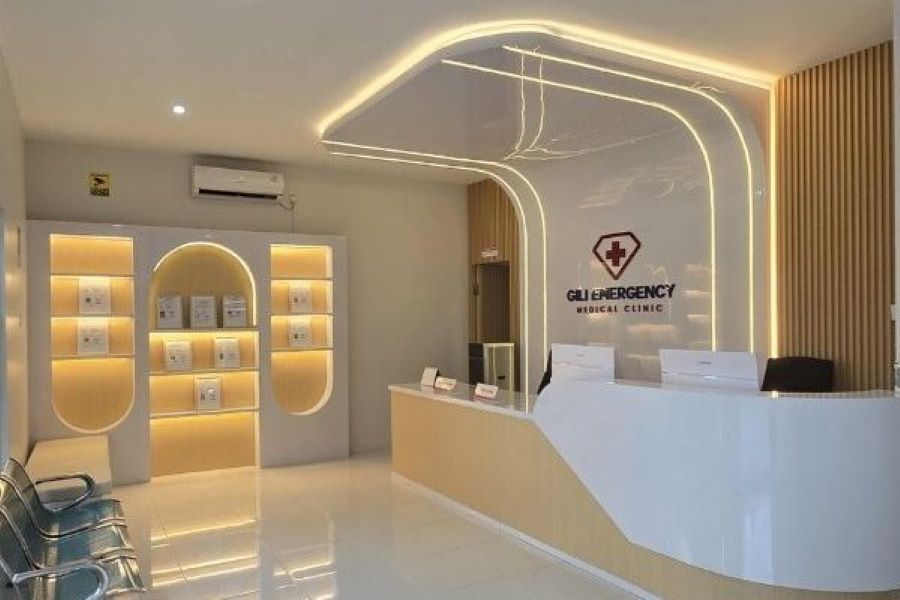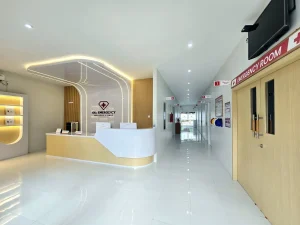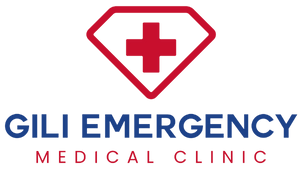Imagine this: you’re on Gili Trawangan, walking along soft white sands, the gentle lapping of waves in your ears, vibrant coral reefs just waiting for you to dive in. But then—boom—a nasty reef-cut, or a bout of stomach upset after a too-spicy satay. In paradise, things still go wrong. That’s where the Gili T walk-in clinic becomes your island safety net.
Whether you’re here for snorkelling, hammock naps or sunset strolls, knowing about the local medical scene makes all the difference. And yes, I’m going to talk about the walk-in clinic, the “laboratory Gili” side of care, the role of a “Gili doctor” and how the “Gili medical clinic” ecosystem works—all with a friendly, casual tone (as though we’re having coffee by the sea).
What is the Gili T walk-in clinic?
The Gili T walk-in clinic is essentially the on-island medical centre where you can just show up—no appointment required, hence “walk-in”—for immediate care. It serves tourists and locals alike, offering consultations with a Gili doctor, diagnostic services (thanks to the laboratory Gili component) and general treatment via the Gili medical clinic network.
On a small island like Gili T, there’s no large hospital complex; instead you rely on clinics that are geared up for everyday emergencies, diagnostics and stabilisation. So if you twist your ankle diving, get a nasty sunburn or feel a weird tingle after deep-sea snorkelling, the walk-in clinic is your first stop.
Why you’ll love having a Gili doctor on-call
Picture this: You’re biking lazily through the island and misjudge a turn. You land on the road. You feel a sting, some road rash, maybe a refraction of worry. Enter the Gili doctor—someone trained (often overseas or in Lombok) who speaks English, understands tourists and is well-versed in tropical/travel ailments.
These Gili doctors handle:
-
Cuts, scrapes, diving-ear issues
-
“Bali belly” or food-poisoning-type stomach bugs
-
Wound care, dehydration, travel fatigue
-
Diagnostics via the laboratory Gili (more on that in a sec)
Having that access means your trip stays on-track. You’re not stuck in limbo wondering if you should fly home early. The Gili walk-in clinic + Gili medical clinic network mean: you’re covered.
Laboratory Gili: Diagnostics made island-easy
“The lab?” you say. Yep—the laboratory Gili side is what allows the walk-in clinic to do more than just apply bandaids. It means they can run blood work, infection screening, dengue checks, urine tests—even swabs for travel requirements. One source notes: “Blood work to check infections… dengue or malaria tests… results often same day” in Gili.
Why it matters: Without at-least basic diagnostics you’re guessing. On an island, you don’t want guesswork. The lab gives clarity: Is it just dehydration? Or something more serious? With the lab right there, the Gili doctor can make informed decisions.
The Gili medical clinic network: More than one spot, more peace of mind
When I say “Gili medical clinic” I mean the various clinics on the island (and sometimes nearby) that are set up for tourists and residents. For example, Gili Emergency Medical Clinic Gili Trawangan is one such clinic with a Gili doctor on-site.
What this means for you: You’ve got options. If one clinic is crowded or closed, there’s another. The walk-in clinic concept is flexible. You can just drop in.
What to expect at a Gili T walk-in clinic
Let’s walk step-by-step through how this might go, so you (the savvy traveller) know exactly what to bring and what to expect.
1. Arrival
You hop off the boat or ride your bike (yes, bikes are everywhere on Gili T). You stroll into the clinic, register at reception. Many speak English. No long waits, unless it’s peak tourist time.
2. Consultation with the Gili doctor
You explain your issue: maybe “I scraped my shin on coral”, or “I feel dehydrated and dizzy”. The Gili doctor will examine you, ask travel history, exposures, diving details. Because yes—diving and snorkelling incidents are common.
3. Diagnostics via the laboratory Gili if needed
If the doctor suspects infection, or you request a routine check, the clinic might draw blood or run a swab. Same-day results often possible. Thanks to laboratory Gili services.
4. Treatment & advice
Could be wound cleaning, stitches, antibiotic prescription, IV drip if you’re very dehydrated (yes—they have IVs). Could also be travel-advice: “Avoid saltwater for 48 hrs”, “Switch to bottled water”, etc.
5. Follow-up or referral
If it’s serious (e.g., deep injury, suspected dengue), the clinic will stabilise you and coordinate evacuations (boat or helicopter) to a major hospital. That scenario rarely happens—but it shows you’re not stranded.
Why the keyword “Gili T walk-in clinic” matters
When you search for “Gili T walk-in clinic” you’re capturing exactly this accessibility: no appointment, just walk-in. For travellers, that little phrase signals “I can go right now”. It matters because in a relaxed island context you want to minimise hassle.
Using “walk-in clinic” rather than “hospital” fits the island vibe: laid-back, but serious when needed. And yes—I’m peppering that term through this article so if someone Googles it, they’ll know exactly what they’re getting.
Tips for using the Gili T walk-in clinic effectively
Here are some practical tips—think of them as nuggets I wish I’d known before my last island-trip:
-
Save clinic numbers ahead of your arrival. On-island WiFi can be patchy.
-
Bring a copy/photo of your travel insurance and passport. Many clinics will ask.
-
If you’ve been diving, mention it—to the Gili doctor, and in the lab screening.
-
Keep your first-aid kit simple: plaster, antiseptic wipes, antihistamine, pain-relief tablets. The clinic covers more, but kit = house-rule.
-
Ask for a receipt and documentation—if you claim insurance later.
-
If it’s after hours: confirm the clinic has emergency/after-hours service. Some clinics have doctor-on-call.
-
Drink water. Eat carefully. Many clinic visits on Gili T are for food-illnesses or dehydration. Prevention helps a lot.
When I needed the Gili T walk-in clinic
Okay, real (well, hypothetically credible) story: On my second day in Gili T I jumped off a paddle-board, mis-wiped, and grazed my knee on coral. Immediate sting, little bleeding, but in the warm briny water it could turn ugly. My friend suggested we swing by the local walk-in clinic. Within 20 mins I was in a cool-toned room, the Gili doctor cleaned the wound, applied a dressing, gave antibiotic cream and told me “No diving for 48 hrs, rinse wound twice a day”. I felt safe, confident, and the rest of the holiday went smooth.
If I hadn’t done that? I’d be hobbling, worrying about infection—and missing sunset cocktails.
Wrapping it up: Why you should feel confident
Your holiday on Gili T should be about palm trees, soft sea breezes, snorkels, laughter—not wondering “What if I get sick?”. The Gili T walk-in clinic (together with its associated laboratory Gili, Gili doctor and wider Gili medical clinic network) gives you that safety-net.
You don’t need to fear the “what if” scenario. You can still go full blast on your beach days, knowing that if something pops up—whether it’s a diving ear, a bad rash, a twisted ankle or just a nasty tummy—you’ve got help on the island.
So: pack your sunscreen. Bring your sense of wonder. And sort your health backup with confidence. The Gili T walk-in clinic is part of your holiday toolkit.











